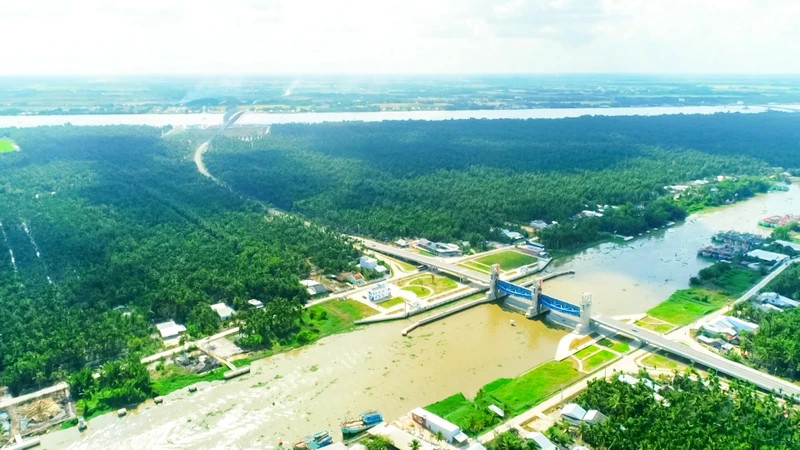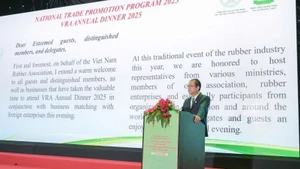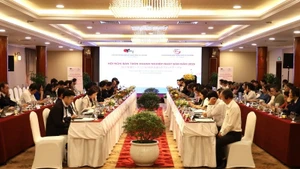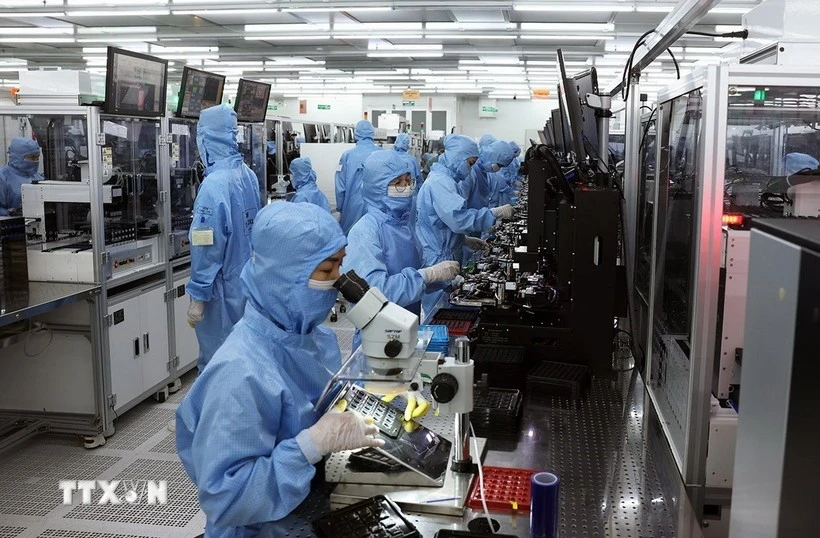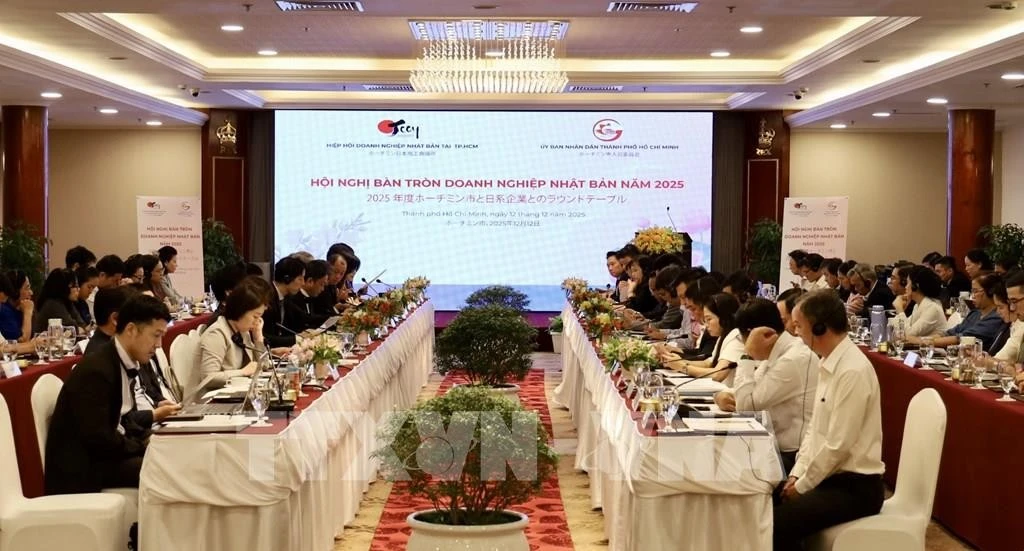However, with the proactiveness of localities and the flexible operation of saline control works, damage to agricultural production in coastal areas has been minimised.
Proactive in agricultural production
According to the Tra Vinh Irrigation Department, to proactively respond to saline intrusion in 2024-2025, the locality has a specific response plan such as proactively implementing solutions to prevent, combat, and protect agricultural production and domestic water for people. Water must be used economically, while proactively storing water sources to supply rice production and aquaculture.
Meanwhile, Ca Mau has an annual rainfall of 2,400mm, the highest in the Mekong Delta. However, in the dry season, Ca Mau is also a place that suffers from severe drought. The impacts of climate change and rising sea levels have been and are directly affecting the lives and production of people in coastal areas.
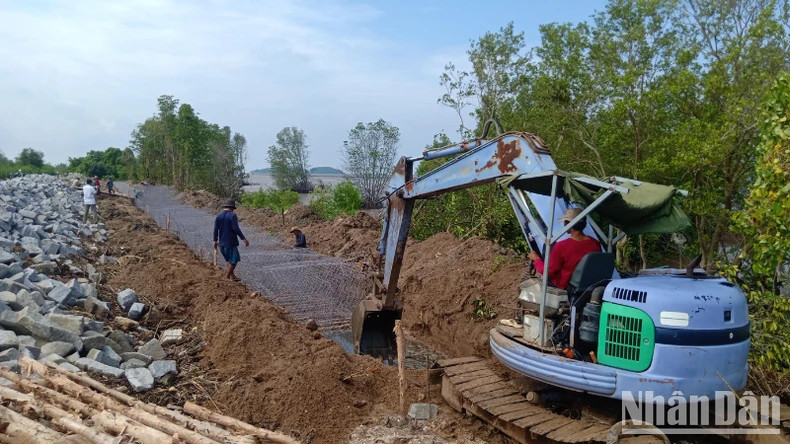 |
| The West Sea Dike Protection Project (Ca Mau) against high tides and rising sea levels |
Faced with the impacts of climate change, Ca Mau Province has mobilised all resources to invest in the construction of landslide prevention and control projects, which have brought about clear results in protecting production and ensuring the safety of people's lives.
However, there are still hundreds of kilometres of riverbanks and coastlines that continue to erode or are at risk of eroding, threatening the safety of people and production, but due to lack of capital, investment has not been arranged. Therefore, there needs to be fundamental solutions to solve the problem.
Nguyen Huy Khoi, Head of the Department of Science, Technology and International Cooperation, Southern Institute of Water Resources Planning, said that the 2024-2025 dry season will not be as severe as previous years. However, saline intrusion will still be high until April.
The peak of saline intrusion is likely to cause local freshwater shortages, especially in coastal areas, saline intrusion deep into river mouths can affect people's lives and production and business activities.
Proactively storing water for irrigation and daily life
Currently, saline intrusion has affected the production activities of people in coastal areas and on branches of the Tien and Hau rivers as far as 40-60km upstream. However, with the initiative of localities in the Mekong Delta, the level of saline intrusion to areas at risk of being affected has been minimised.
Along with that, people have proactively stored water in canals, ditches, ponds, and gardens for irrigation and daily life. At the same time, localities have announced areas at risk of being affected at the end of the season and have been proactive in production planning and converting crop structures accordingly.
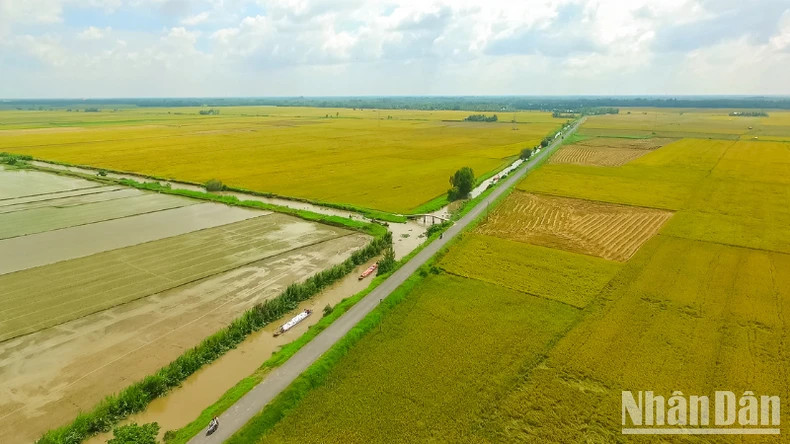 |
| The inland irrigation system has been strengthened to serve the specialised rice growing areas. |
According to the Southern Institute of Water Resources Planning, irrigation infrastructure plays an important role in mitigating and preventing natural disasters in the Mekong Delta and has been gradually completed. However, in years of extreme drought and flooding, many risks still appear, requiring completion and approach at the level of risk management, synchronously with other soft solutions.
Tran Duy An, Deputy Head of the Irrigation Planning Department at the Southern Institute of Irrigation Planning, said that large-scale projects such as Cai Lon-Cai Be and Ninh Quoi have helped in controlling saline intrusion.
Accordingly, the goal of natural disaster prevention and control by 2030 is to prevent and control drought for the area at risk in the central and coastal areas of about 530,000 hectares in the freshwater sub-regions; and minimise the impact of saline intrusion for 600,000 hectares of coastal areas in the irrigation project area.
The forecast of natural disasters in the Mekong Delta is more complicated and unpredictable due to climate change and impacts from resource exploitation in the upper Mekong River.
However, with high initiative, local people in the region have proactively implemented solutions to store water, save irrigation, and prevent and control drought and salinity. Along with that, scientific and technological solutions are applied to use water reasonably and effectively in rice cultivation areas and fruit orchards.
Dinh Thanh Mung, Department of Management and Construction of Irrigation Works, Ministry of Agriculture and Environment, said that ensuring water security is a big challenge for the Mekong Delta. Therefore, proactively adapting to climate change, protecting the environment, and overcoming water degradation and depletion are urgent issues in the current context.
According to statistics, the entire Mekong Delta has 15 irrigation systems serving over 2.5 million hectares, accounting for 64% of the total area. However, the region faces major challenges in terms of freshwater security, riverbank, coast, canal and ditch erosion. Therefore, the solutions for the region are to ensure water supply for daily life and production, build sustainable agriculture, and adapt to climate change.
According to the Department of Irrigation Works Management and Construction, Ministry of Agriculture and Environment, the dry season in the Mekong Delta has 2 large high tides, causing high salinity intrusion. Therefore, operational and exploitation solutions must be synchronised to bring high efficiency.
People and local authorities need to proactively store, regulate water resources and shift seasons to form the habit of proactively responding to climate change. At the same time, there are solutions to convert crops to adapt to drought and salinity, while proactively storing and using water reasonably in production and daily life.
Irrigation works promote efficiency
With the initiative in preventing and combating drought and salinity in recent times, it has helped localities ensure clean water sources for production and daily life. Regarding the long-term strategy, the Mekong Delta is implementing the construction of an irrigation system to effectively distribute and regulate water resources and transfer water resources from abundant areas to deficient areas to join hands in adapting to climate change.
According to the forecast of the Southern Institute of Water Resources, from now until the end of March, the flow from upstream to the Mekong Delta will increase sharply, while salinity intrusion in river mouths will decrease rapidly. The Mekong River estuary areas within a range of 30-40km from the sea are likely to have fresh water regularly, convenient for water intake.
The Southern Institute of Water Resources Research believes that localities need to take advantage of this time to operate irrigation works to flush the system and store maximum water in the canal system and plant the early summer-autumn rice crop of 2025 in areas with irrigation infrastructure that actively controls water sources.
For areas 25-30km from the sea that are still affected by saline intrusion, it is necessary to wait for the freshwater source on the river to stabilise and widespread rain to appear before planting the summer-autumn crop of 2025 in order to avoid risks.
